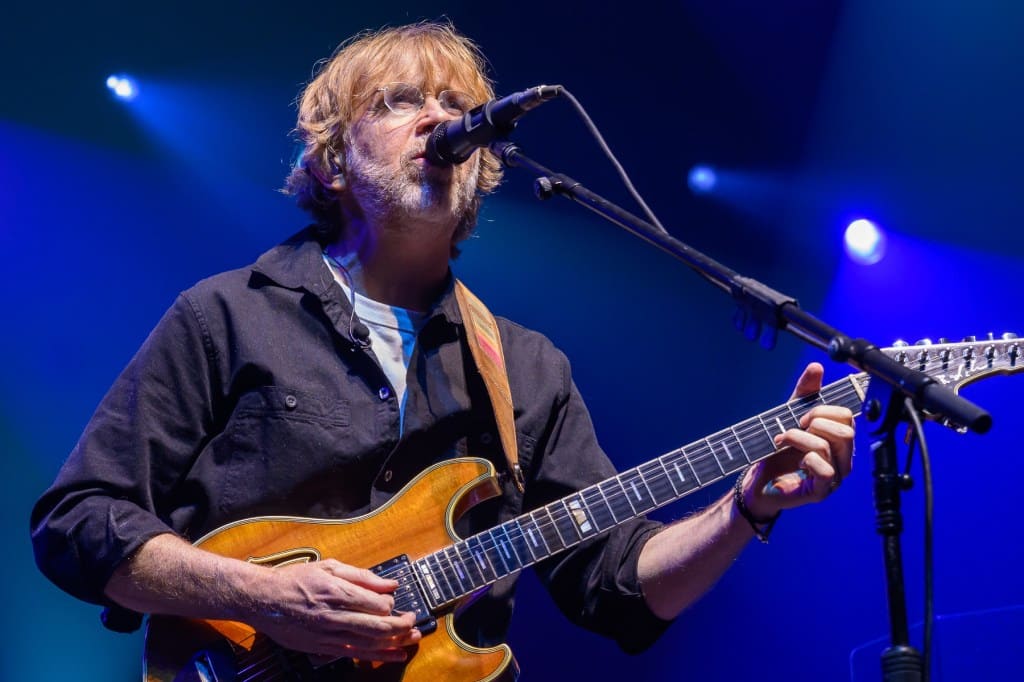How the Holy Month of Ramadan Became a Musical Phenomenon: The Rise of TV Intro Songs, Viral Ads & Pop Anthems
Written by djfrosty on March 28, 2025
Once considered a quiet season for the music industry, Ramadan is now a full-blown musical phenomenon. As Firas Abou Fakher, the vp of audience growth and strategy at Universal Music Middle East, puts it, “Ramadan is no longer a ‘break period’ for the music scene like it used to be.”
In recent years, Ramadan has become a prime time for music releases, fueled by the rise of TV series, commercial campaigns and a growing appetite for nostalgia. But music has always been an essential part of Ramadan’s artistic memory. From the golden voices of Ammar El Sherei and Sayed Mekawy to legendary lyricists like Salah Jaheen, Sayed Hegab and Abdelrahman El-Abnoudi, paired with artistic talents like Nelly and Sherihan, Ali Al Hajjar and Assala, music has long set the stage for unforgettable Ramadan moments.
However, nothing compares to today’s musical boom, where TV series soundtracks and brand-backed anthems dominate streaming charts, transforming the Holy Month into a dynamic season for artists and production houses alike.
Trending on Billboard
So, how did we get here? Billboard Arabia sat down with top industry insiders and traced the evolution of Ramadan’s soundscape since the ’80s.
More Than Just TV Soundtracks: Music as Part of the Storyline
Lately, Ramadan has become a launchpad for hit songs, with artists strategically linking their releases to trending TV series. According to Wissam Chartouni, co-founder of Glava Holding (home to Watary and Music Is My Life), “artists now have a higher chance of success when their songs are tied to popular TV shows. Additionally, old classics are getting a fresh revival when featured in pivotal scenes.”
A perfect example? This year, Sherine Abdel Wahab’s 2018 album Nassay saw a massive resurgence after its tracks were featured in the Ramadan series Ekhawati (My Sisters), propelling her back to the top of the Billboard Arabia Hot 100 chart.
Karima Damir, the vp of artist development and repertoire growth at Universal Music Middle East, also notes a shift in how artists engage with Ramadan series: “Singers are becoming integral to the storyline itself. We’re even seeing rappers take on acting roles.” Take, for example, Abyusif, who joined Ahmed Mekky in El Ghaoui during the current season, or Shahin, who starred in Lunchbox last year. Arabic music and drama have never been more intertwined.
From Fawazeer to Viral Ads
For decades, Ramadan’s “fawazeer” (riddle-based variety shows) ruled the entertainment scene, with stars like Nelly and Sherihan leading the stage. Nelly dazzled audiences with standout performances in works like Al Khatba (The Matchmaker) and Arousati (My Doll), where she collaborated with iconic poet, lyricist and playwright Salah Jahin. Meanwhile, Samir Ghanem brought to life the beloved character Fatoota, accompanied by a long, comedic opening theme composed by Sayed Mekawy—one that still lingers in memory today.
In the ’90s, Sherihan reigned supreme with productions like “Hagat W Mehtagat” (Needs and Wants), penned by Egyptian songwriter Sayed Hegab and set to music by composer Moudy El Imam, who blended fast-paced rhythms with vibrant orchestral arrangements.
These productions were packed with elaborate song-and-dance numbers composed by musical giants. But as the 2000s rolled in, fawazeer faded, making room for a new powerhouse: Ramadan commercials. In recent years, brands have gone beyond simple jingles. Instead, they have invested in cinematic-style music videos with chart-topping stars, sometimes downplaying their product’s presence to ensure the song has standalone appeal.
Some of these ad songs have become cultural hits, such as “Asmar Oyonoh Samrah” (Brown-skinned, brown-eyed) and “Ramadan Fi Masr Haga Tanya” (Ramadan in Egypt is something else), performed by Hussein Al Jassmi, a staple on Billboard Arabia’s charts.
This year alone, A-list artists like Al Jassmi, Sherine, Elissa, Tamer Hosny, Angham, Wegz and Ahmed Saad (who led an impressive seven different ad campaigns) dominated Ramadan’s musical space.
Mohamed Jaber, vice president of Mazzika Group, explains this shift: “Brands are now creating songs that can live beyond Ramadan. The goal is for people to play these tracks at gatherings and celebrations, making them more than just an ad—they become part of our culture.”
The Soundtrack Lives On
Despite all these shifts, one thing remains unchanged—TV series intro songs still reign supreme. Since the 1980s, Ramadan drama intros have been a gateway for timeless hits. Legendary collaborations like Sayed Hegab and Ammar El Sherei set the foundation for this genre, creating unforgettable classics. This is evident in the iconic Layali El Helmeya (Al-Hilmiya Nights) theme song, written by Hegab, composed by Michel El Masry and performed by Mohamed El Helou in 1987.
The 1990s ushered in the golden era of intro soundtracks in both Egyptian and Syrian drama. In Egypt, poets like Ahmed Fouad Negm in Zizinia and Abdelrahman El Abnoudi with Ze’ab El Gabal penned lyrics for TV dramas, while Ali El Haggar’s performances of the songs “Bawabat El Halawani” and “El Mal wel Banoon” became iconic.
Meanwhile, in Syria, the 1994 series Nihayat Rajol Shujaa (The End of a Brave Man) marked a turning point. Featuring a fully composed original score by Tarek Al Nasser, its theme, “Ya Rouh La Tahzani,” became an integral part of the show’s identity.
Syrian drama also saw a flourishing partnership between director Hatem Ali and composer Taher Mamelli, who infused an epic musical approach into productions like “Al Fosoul Al Arbaa,” “Boqaat Daw” and “Thikrayat Az Zaman Al Qaadem.” Mamelli often unearthed local voices, adding authenticity to his scores.
The Rise of Pop Stars and the Evolution of Ramadan’s TV Theme Songs
TV series like Salah Ad Din Al Ayyubi (2002), Qasim Amin (2003) and Nizar Qabbani (2005) marked a turning point. Following their success, production companies began recruiting top pop stars for theme songs. Pop star Assala lent her voice to all three, bringing celebrated poets’ words to life and leaving a deep impression on Arab audiences. These songs transcended their series, taking on national and emotional significance.
During this era, Egypt’s Ramadan TV season changed, with more channels and bigger productions. Some lyricists preserved the ‘90s spirit, like Ayman Bahgat Kamar’s “Abbas Al-Abyad fi Al-Yawm Al-Aswad” (2004), composed by Mahmoud Talaat and performed by Medhat Saleh. However, commercial pressures meant lyricists often wrote intros based solely on show titles, leading to more generic hooks, as seen in the show El Kaboos.
New voices emerged in theme songs. Hisham Abbas performed “Yetrebba Fi Ezo” (2007), composed by Talaat. In 2010, Ahmed Mekky broke new ground by writing and performing his own hip-hop intro, a massive success in rural Egyptian dialect.
In the Gulf, Nawal Al Kuwaitia became a staple Ramadan drama voice, singing for Al Raha, Al Dereesha and Damat Omr, while Asma Lamnawar mastered Khaleeji music with Oyun Al Hob, Sara and Ahbabtak Mundhu Al Sighar.
Meanwhile, historical Syrian dramas grew in popularity. The iconic show Bab Al Hara (2006–2017) featured a legendary theme song, “Elli Beddo Yetahadda,” performed by Adnan Al Hallaq with lyrics by Osama Al Saud and music by Saad Al Husseini.
Pop stars continue to shape TV intros, making them more like standalone hits designed for viral success. This year, Syrian dramas introduced fresh voices like Ziad Bourji, Nassif Zeytoun, Rahma Riad and Abir Nehme. Rising star Al Shami debuted with Taht Sabe’ Ard, marking a strategic shift as producers capitalized on his recent fame.
The Rise of Shaabi and Mahraganat Music
By the mid-2010s, Ramadan’s musical landscape had expanded beyond traditional soundtracks. Enter the street anthems: Mahraganat and traditional hip-hop-infused tracks became regulars in TV series intros, performed by artists such as Hassan Shakosh and Bousy. In 2020, Bi 100 Wish (With a Hundred Faces) became the first show to feature a Mahragan intro song, Millionaire, performed by El Madfaagya and famed actress Nelly Karim.
Fast forward to Ramadan 2024 and 2025. Mahraganat star Essam Sasa achieved record-breaking success with his intro songs, ranking among the few to reach the Billboard Arabia charts. His track “Etnen Be Maqam Malayin” (Two Are Worth Millions), from the series Massar Egbari, landed in the Hot 100’s top 10 last year.
With Ramadan now a season of cultural significance beyond religious observance, its musical phenomenon continues to evolve, marking a unique space where nostalgia, innovation and commercial success intersect.

 State Champ Radio
State Champ Radio 





